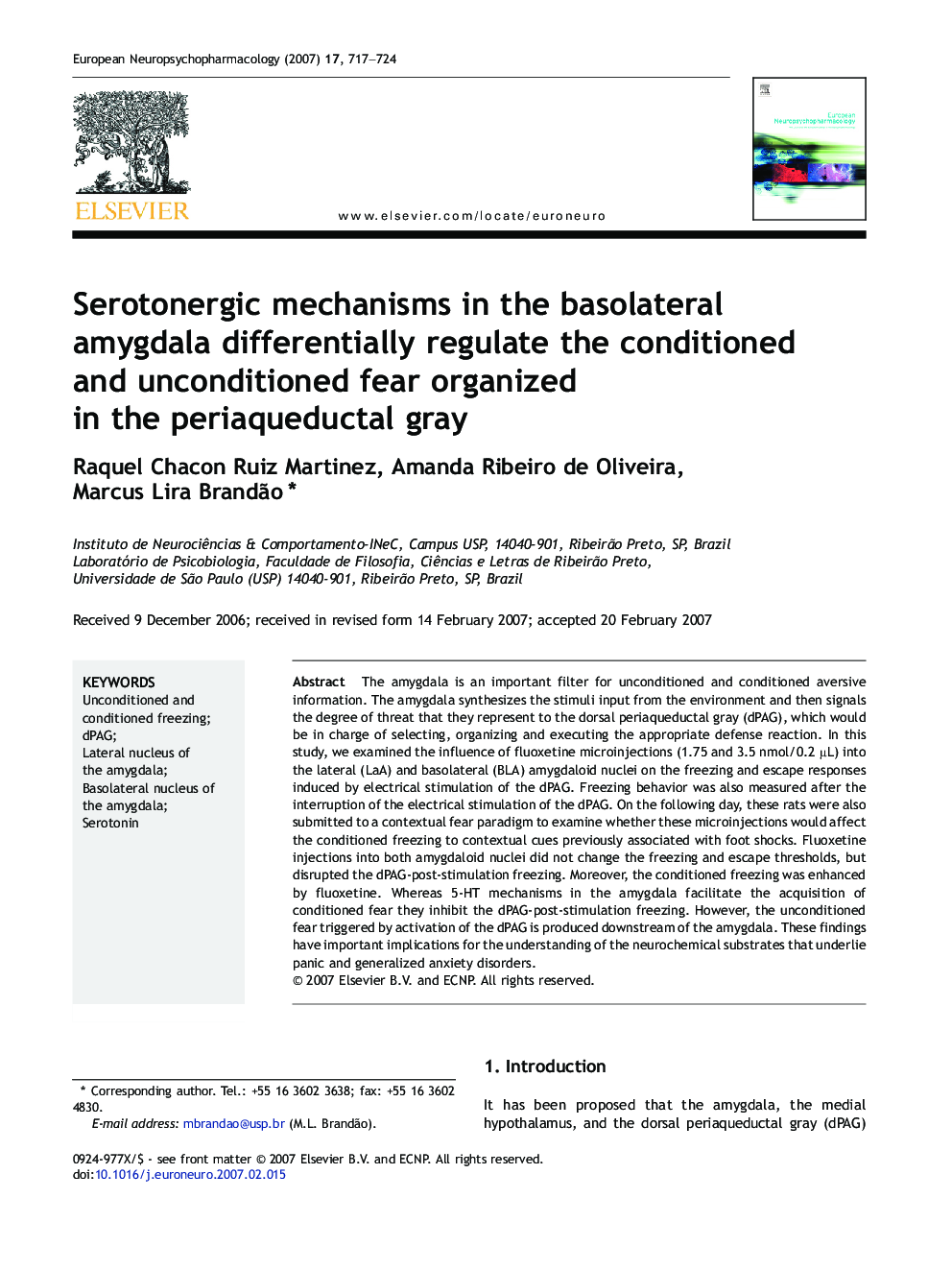| Article ID | Journal | Published Year | Pages | File Type |
|---|---|---|---|---|
| 319244 | European Neuropsychopharmacology | 2007 | 8 Pages |
The amygdala is an important filter for unconditioned and conditioned aversive information. The amygdala synthesizes the stimuli input from the environment and then signals the degree of threat that they represent to the dorsal periaqueductal gray (dPAG), which would be in charge of selecting, organizing and executing the appropriate defense reaction. In this study, we examined the influence of fluoxetine microinjections (1.75 and 3.5 nmol/0.2 μL) into the lateral (LaA) and basolateral (BLA) amygdaloid nuclei on the freezing and escape responses induced by electrical stimulation of the dPAG. Freezing behavior was also measured after the interruption of the electrical stimulation of the dPAG. On the following day, these rats were also submitted to a contextual fear paradigm to examine whether these microinjections would affect the conditioned freezing to contextual cues previously associated with foot shocks. Fluoxetine injections into both amygdaloid nuclei did not change the freezing and escape thresholds, but disrupted the dPAG-post-stimulation freezing. Moreover, the conditioned freezing was enhanced by fluoxetine. Whereas 5-HT mechanisms in the amygdala facilitate the acquisition of conditioned fear they inhibit the dPAG-post-stimulation freezing. However, the unconditioned fear triggered by activation of the dPAG is produced downstream of the amygdala. These findings have important implications for the understanding of the neurochemical substrates that underlie panic and generalized anxiety disorders.
